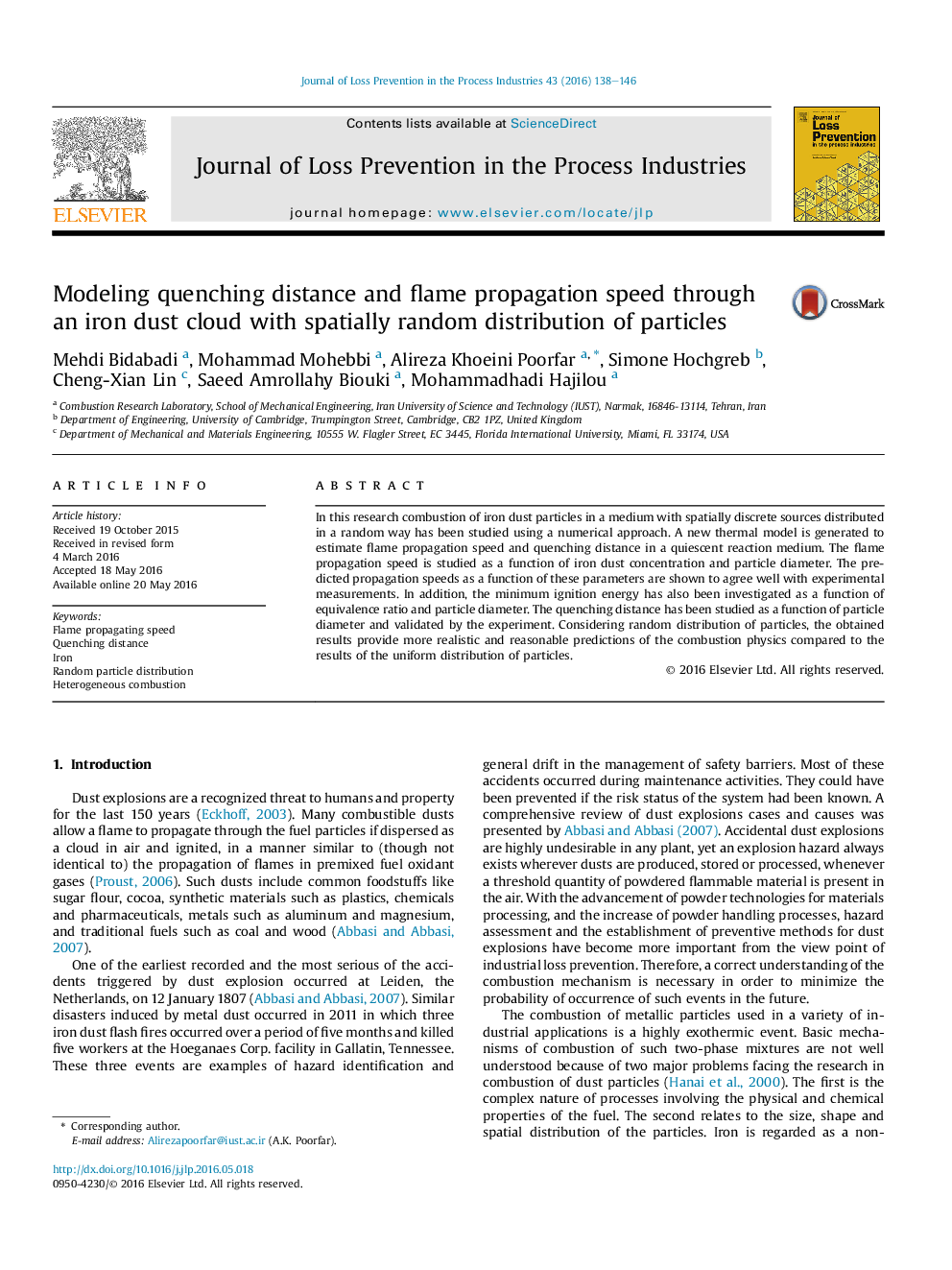| Article ID | Journal | Published Year | Pages | File Type |
|---|---|---|---|---|
| 585919 | Journal of Loss Prevention in the Process Industries | 2016 | 9 Pages |
•A thermal model is generated to estimate quenching distance of Iron dust cloud.•Flame front Speed in terms of dust concentration, particle sizes is studied.•Random distribution of particles in 3D space is considered in the thermal model.•Minimum ignition energy is investigated as a function of equivalence ratio.
In this research combustion of iron dust particles in a medium with spatially discrete sources distributed in a random way has been studied using a numerical approach. A new thermal model is generated to estimate flame propagation speed and quenching distance in a quiescent reaction medium. The flame propagation speed is studied as a function of iron dust concentration and particle diameter. The predicted propagation speeds as a function of these parameters are shown to agree well with experimental measurements. In addition, the minimum ignition energy has also been investigated as a function of equivalence ratio and particle diameter. The quenching distance has been studied as a function of particle diameter and validated by the experiment. Considering random distribution of particles, the obtained results provide more realistic and reasonable predictions of the combustion physics compared to the results of the uniform distribution of particles.
Graphical abstractThe spatial distribution of particles in dust cloud: Layer n − 1 (burned particles), layer n (burning particles), and layer n + 1 (preheating particles).Figure optionsDownload full-size imageDownload as PowerPoint slide
